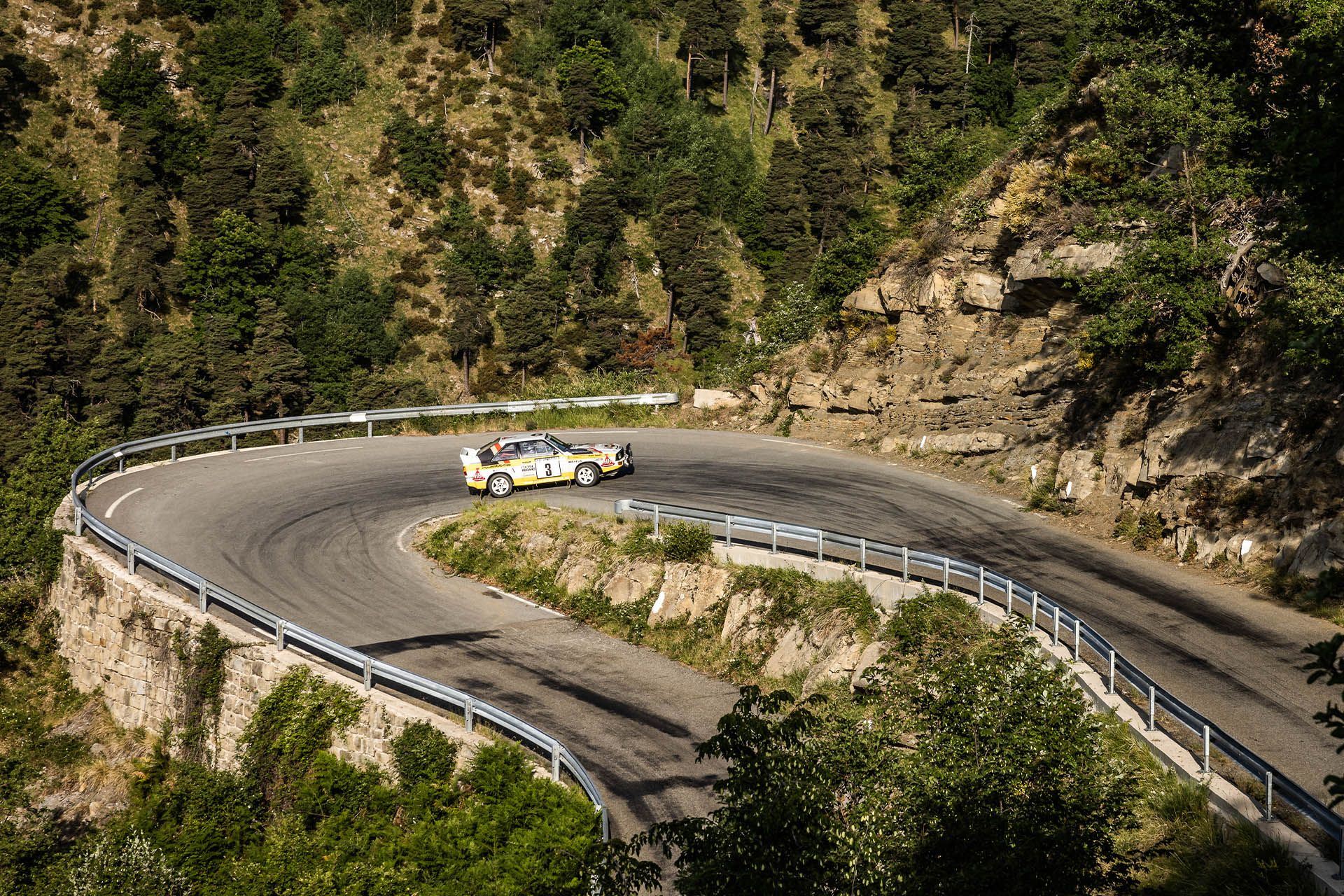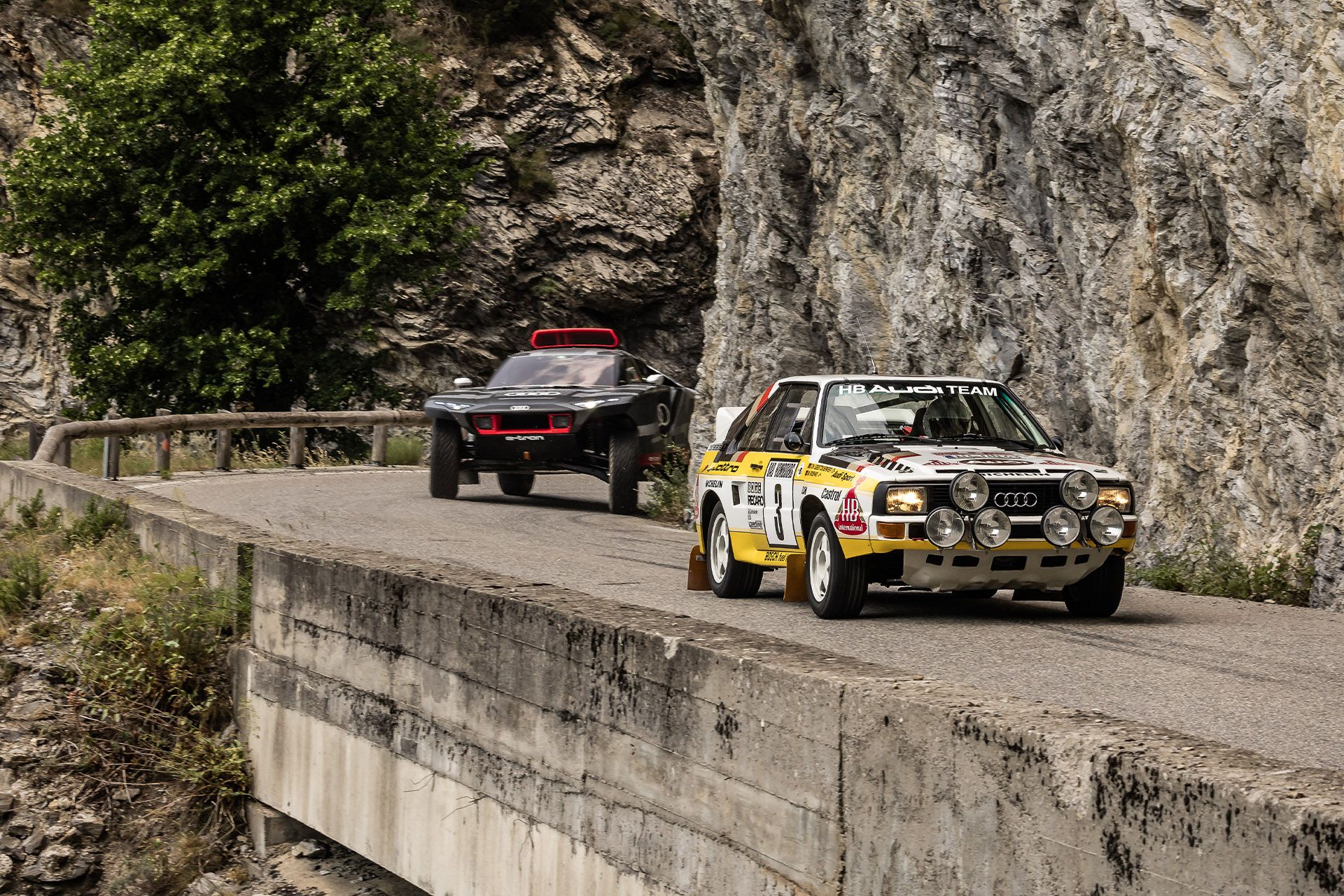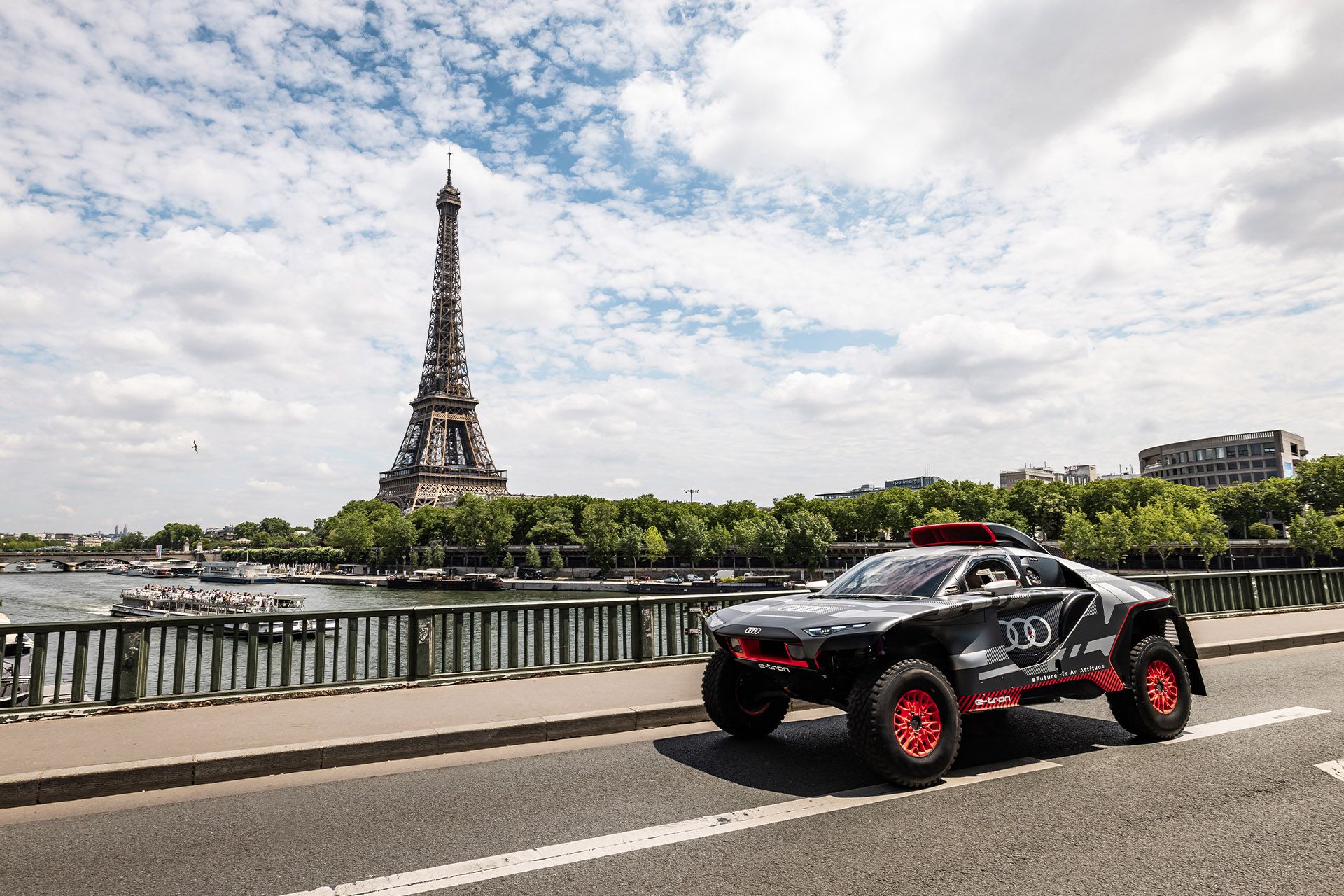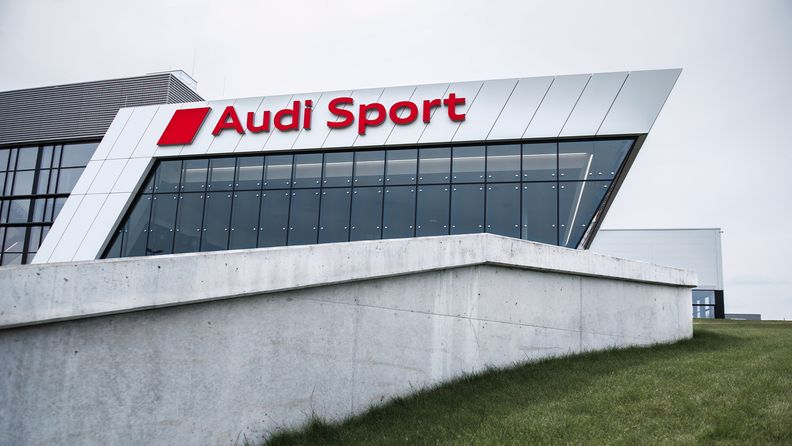On track with the myth
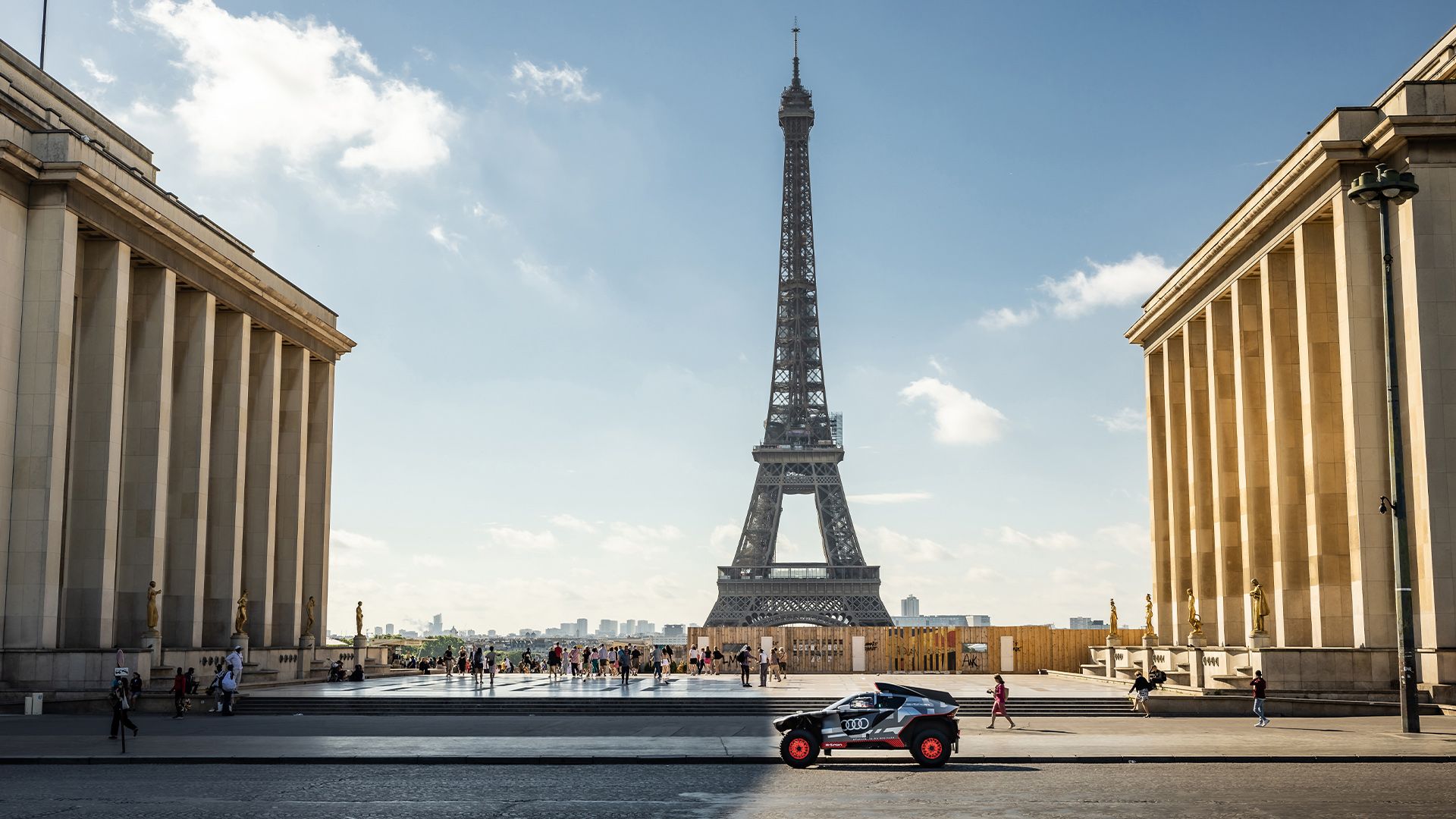
¹The vehicle shown here is the Dakar Rally vehicle; it is not for sale. Closed track, professional driver. Don’t try this at home.
¹The vehicle shown here is the Dakar Rally vehicle; it is not for sale. Closed track, professional driver. Don’t try this at home.
Many stories and legends tell about the Dakar Rally. The cross-country race fascinates people. Even if you’re not that much into motorsport, "the Dakar" is a household name for many. Audi has been an active part of the adventure since 2021. The latest chapter in the rally's long history could be titled "The Electrification of the Desert." Which, if truth be told, started over 40 years ago with a mishap.
It is 1977 when French driver Thierry Sabine gets lost on his motorcycle at the border to Libya during the Abidjan-Nice Rally. For three days he wanders through the desert under a scorching sun until he is finally rescued. Sabine returns to France, but the borderline experience in Africa is something he won't forget. He dreams of organising a rally through the Great Sand Sea – a challenge for those who go. A dream for those who stay behind.
On December 26, 1978, the time has come: 182 vehicles leave Paris to go on an adventure that will take them through Algeria, Niger, Mali, the Upper Volta, and Senegal to Dakar – and to their limits. On January 14, 1979, only 74 vehicles reach the finish line. And yet the Paris-Dakar myth is born.

A challenge for those who go. A dream for those who stay behind – that was the motto of the Dakar Rally.
To this day, the rally, which now only goes by the name "Dakar", enjoys special status among all who have experienced it. "It is simply one of the most demanding races in the world," says someone who should know: French driver Stéphane Peterhansel has won the rally more times than anyone else: 14 victories, six times by motorcycle, eight times by car. The route, the terrain, the weather, the duration, all pose extreme challenges for man and machine, says Peterhansel. Over a period of 14 days, the teams cover about 10,000 to 12,000 kilometres, depending on the route. "Winning this rally is difficult. It's like 14 races in one – one mistake and it's over."
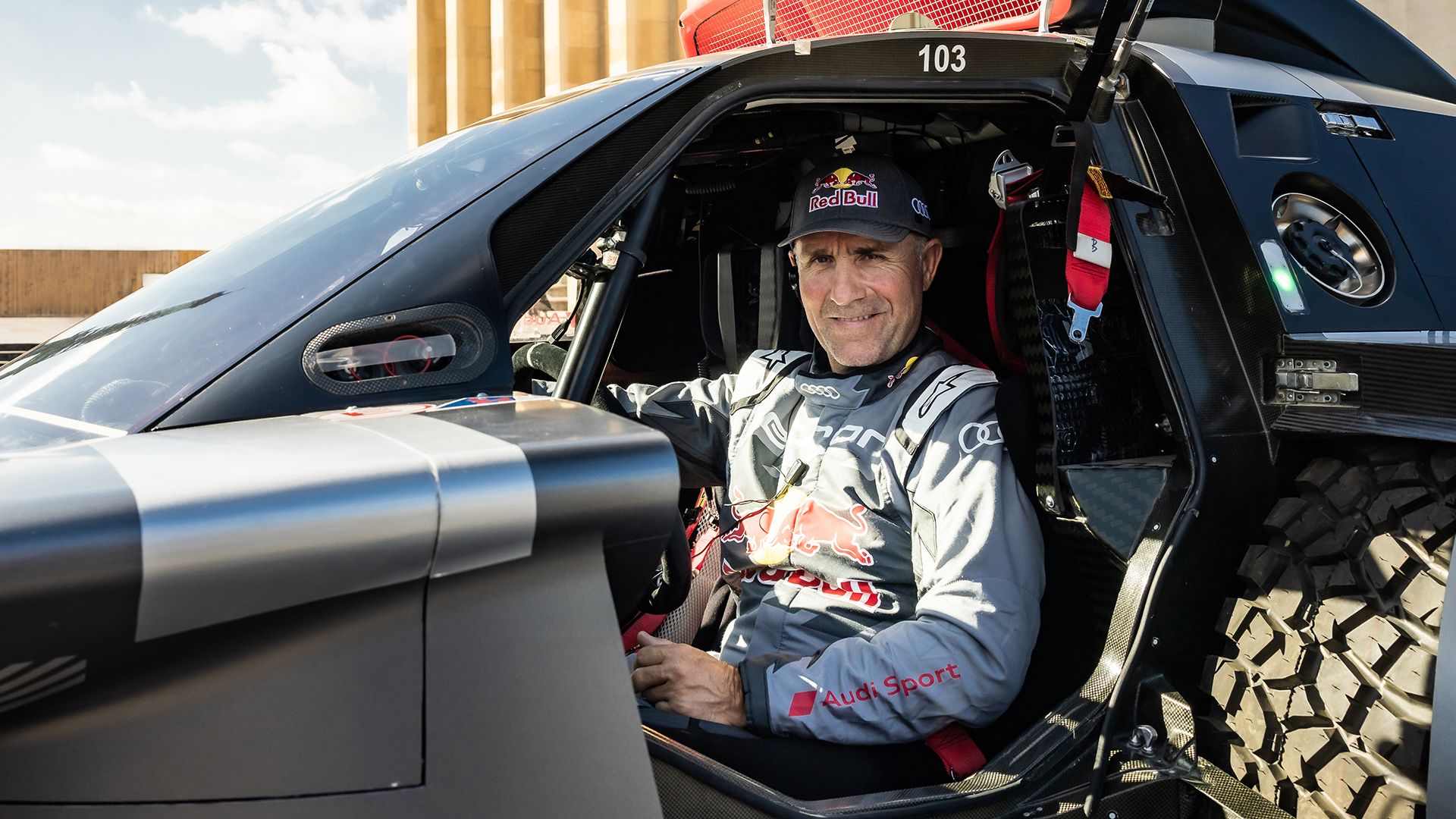
For January 2023, a completely new route for the rally is planned. It will be longer and even more demanding, taking the drivers from the beaches of the Red Sea to the sands of the Arabian Gulf in Dammam. The fact that the layout of the route is changing has already become a tradition over the decades: from its debut in 1979 until 2007, it led from Europe across the African continent. Then came the break in 2008, when the rally was supposed to start in Lisbon and run through Spain, Morocco, the Western Sahara, and Mauritania to Senegal. However, due to terror warnings, the rally was cancelled for the first (and so far only) time in history – one day before the start. Because of safety concerns, it was moved to South America, running through Argentina, Bolivia, Chile, and Peru from 2009 to 2019. Then, in 2020, the move to Saudi Arabia.
Audi x Dakar Rally
When participating in the Dakar Rally for the first time in January 2022, Audi took on one of the biggest challenges there is in motorsport. And it did so with a clear goal: to further advance the electrification of motorsport. The alternative drive concept¹ of the specially developed Audi RS Q e-tron² combines an electric drivetrain with a high-voltage battery and a highly efficient energy converter. The learnings gained from the first participation were fed into the development of the second generation of the Audi RS Q e-tron³ rally vehicle with which Audi will compete in the then 45th edition of the Dakar Rally in January 2023.
¹The Audi RS Q e-tron combines an electric drivetrain with an energy converter system consisting of a TFSI engine and generator.
²,³These vehicles are Dakar Rally vehicles; they are not for sale.
¹The Audi RS Q e-tron combines an electric drivetrain with an energy converter system consisting of a TFSI engine and generator.
²,³These vehicles are Dakar Rally vehicles; they are not for sale.
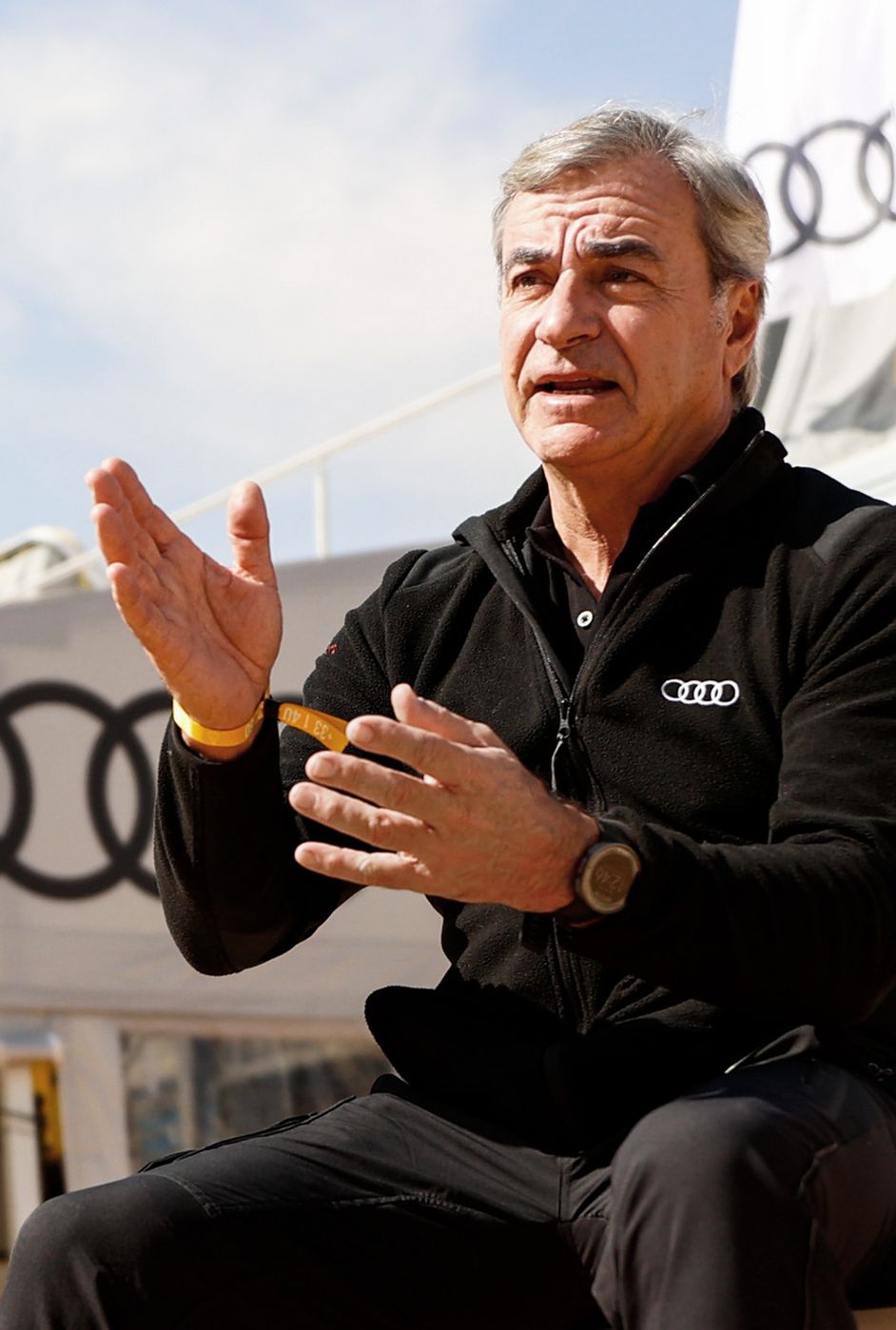
Carlos Sainz knows all the variations: he participates for the first time in 2006, setting off from Europe to Africa. The race starts in Barcelona, and in Malaga the team sets off for Africa. A special moment for Spanish driver Sainz. In 2010 he clinches victory for the first time in South America, repeating his success in 2018 and then in 2020 at the Saudi Arabia premiere. In 2022 he finally drives the Audi RS Q e-tron¹ to its first stage victory there: "A moment I'll never forget. This rally is an adventure into the unknown. It's so tough that even just finishing is an accomplishment." The Dakar Rally, he says, must be treated with respect. It pushes everyone to their limits.
Because the rally can be merciless, mistakes will not only cost you victories. Over the years, accidents happen time and time again, and participants get lost. In 1982, for example, Mark Thatcher, son of the then British prime minister Margaret Thatcher, goes missing. He and his female co-driver are lost for days. Things turn out well: after three days of searching, the missing persons are found in a village in South Algeria.
¹The vehicle shown here is the Dakar Rally vehicle; it is not for sale. Closed track, professional driver. Don’t try this at home.
¹The vehicle shown here is the Dakar Rally vehicle; it is not for sale. Closed track, professional driver. Don’t try this at home.

The Dakar Rally, it seems, has seen it all and has everything to offer: triumph and tragedy, adventurers, stars and starlets mingling at the starting grid, bizarre anecdotes and, time and time again, tremendous feats of man and technology at the limit. There are racing legends like Jacky Ickx, who wins the 1983 rally with amateur co-driver and actor Claude Brasseur, or royal participants like Prince Albert of Monaco. There are stories like that of Ari Vatanen, who is leading the field in 1988 when his vehicle is stolen from him at night and held for a ransom. And there is the significance of the world's biggest rally as perhaps the last true motorsport adventure: a cross-country race that amateurs and professionals alike take on. The individual stages can be more than 800 kilometres long. In which people go beyond their physical and often also mental limits. In which the vehicles are exposed to the most extreme conditions and the failure rate is often more than 50 percent. This makes Audi’s achievements with the RS Q e-tron¹ and its electric drivetrain² at the 2022 Dakar Rally all the more remarkable: the three Audi driving teams won four stages and clinched a total of 14 podium results in the daily rankings.
¹The vehicle shown here is the Dakar Rally vehicle; it is not for sale.
²The Audi RS Q e-tron combines an electric drivetrain with an energy converter system consisting of a TFSI engine and generator.
¹The vehicle shown here is the Dakar Rally vehicle; it is not for sale.
²The Audi RS Q e-tron combines an electric drivetrain with an energy converter system consisting of a TFSI engine and generator.
“This rally is an adventure into the unknown. It's so tough that even just finishing is an accomplishment.”
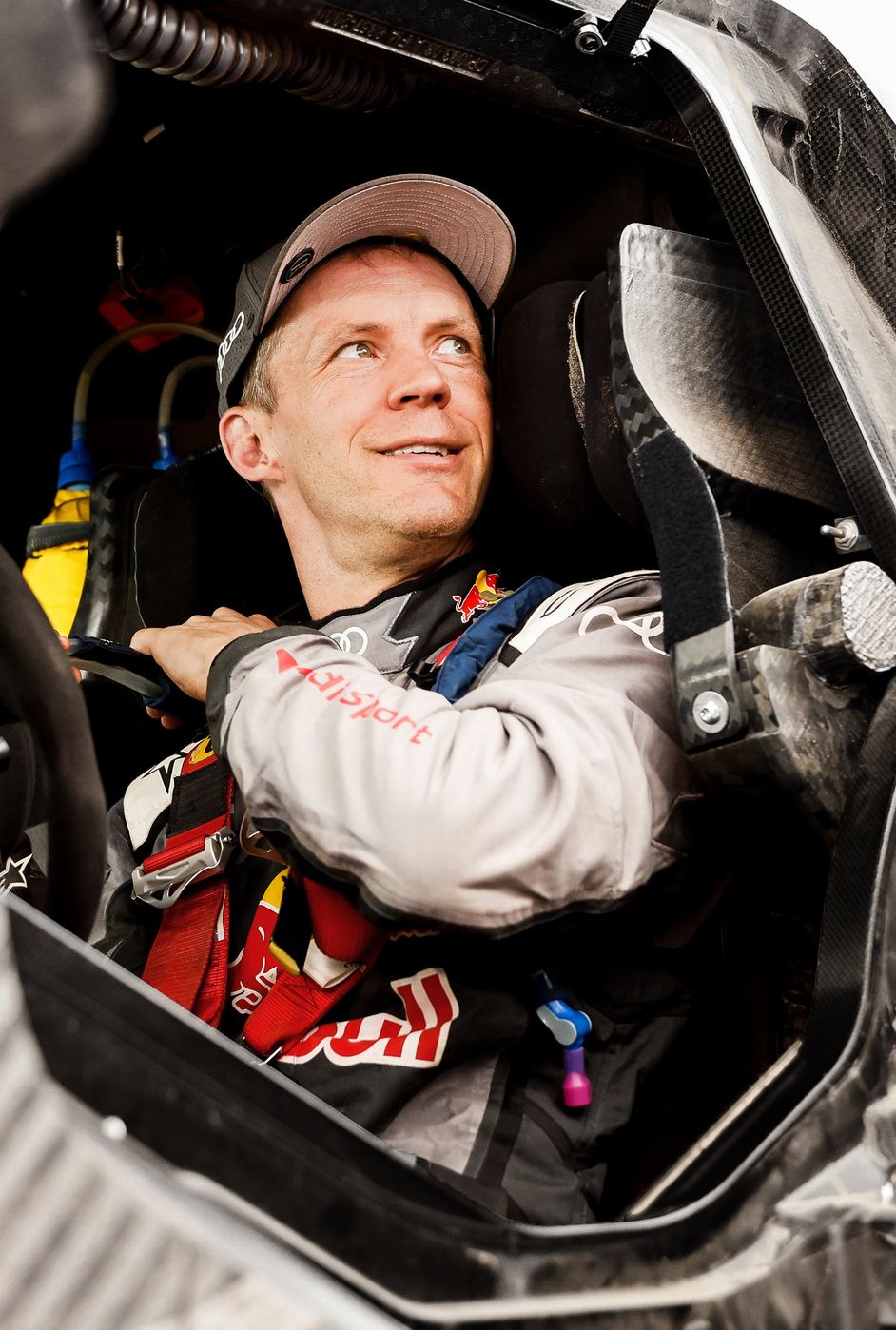
The Dakar Rally makes for probably the world's most demanding test facility for a drive concept¹ like Audi's. "This project was probably the most challenging but also the most exciting task for me as well," says Mattias Ekström. The Swede is regarded as one of the most versatile race drivers ever. He won two DTM titles for Audi and once became Rallycross World Champion. Driving in the desert, through breathtaking landscapes, long days all on your own, with extreme demands on the vehicle – that's impressive even for the seasoned pro. Ekström first competed in the Dakar back in 2021, then in 2022, with his fellow countryman Emil Bergkvist next to him in the cockpit, for Audi: "I remember the first day most vividly: sandy roads and jumps over 30, 40 metres – they are moments that I will remember forever."
And the plan for next year, for the 45th edition of the legendary rally, has already been drawn up as well: "I can't wait to drive the new Audi RS Q e-tron¹ and push the limits even further," says Ekström. After the highly acclaimed debut, the aim is to make it to the podium of the overall standings – and to continue writing the legend. That of the Dakar Rally and that of Audi in motorsport.
¹The vehicle shown here is the Dakar Rally vehicle; it is not for sale.
¹The vehicle shown here is the Dakar Rally vehicle; it is not for sale.

